Performance and reliability testing
and evaluation technologies
Yutaka has equipment that can perform a wide range of tests from material function evaluation to
product performance and reliability evaluation.
With such equipment, the developed products are verified to guarantee performance and reliability.
Motor System
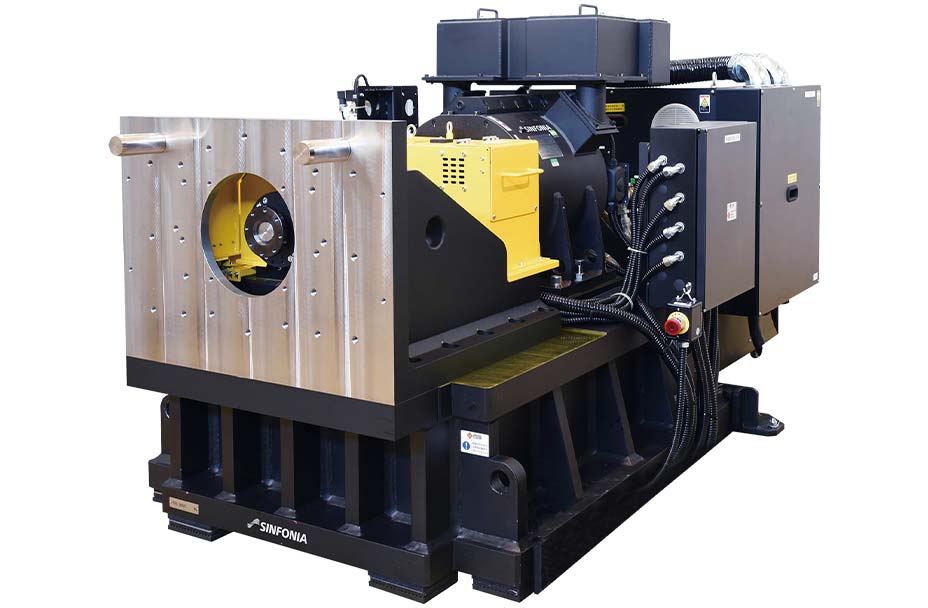
Motor bench
Dedicated equipment that can perform performance measurement and durability testing for
motors and their assemblies.
This equipment can measure motor efficiency and rpm-torque characteristics.
It also enables programmed operation with a durability testing mode that simulates the
actual vehicle operation.
-
Dynamometer:
Small/medium 100 kW-20,000 rpm
Large 300 kW-25,000 rpm
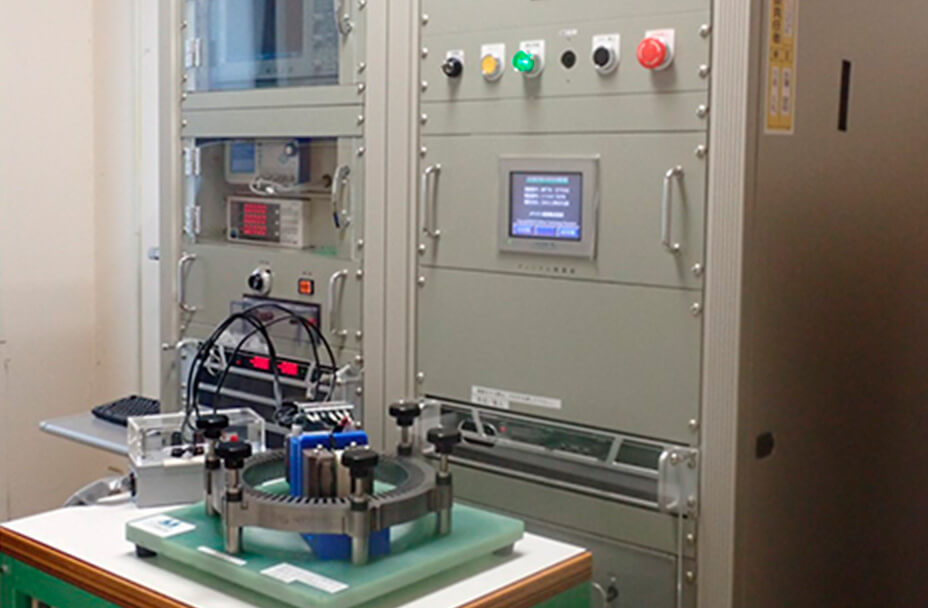
AC/DC magnetization measuring instrument
Equipment used to measure the magnetic characteristics of electromagnetic steel sheets
with an Epstein test frame, single sheet frame, and dedicated frame.
This equipment can measure the magnetic flux density, iron loss (W/Kg), and hysteresis
curves with varying excitation frequencies.
(Excitation frequency: 40 to 20 KHz)
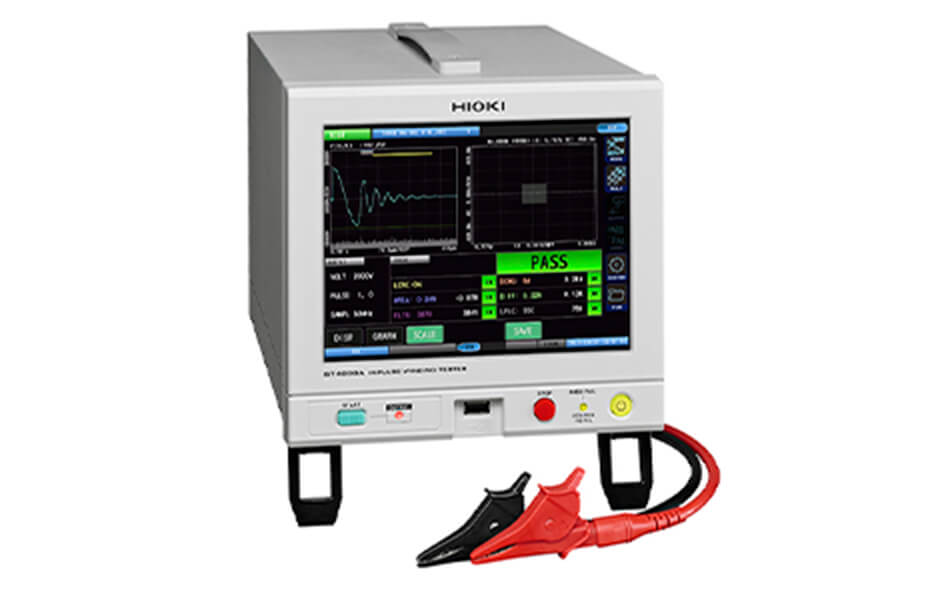
Impulse tester
The tester used to inspect stators, inductors, and other motor parts for insulation
failures between windings.
Using the waveform obtained by applying an impulse to a non-defective product as a
reference (master waveform), the waveform and area are compared to make a pass/fail
judgment.
(Applied voltage: 100 to 4,200 V)
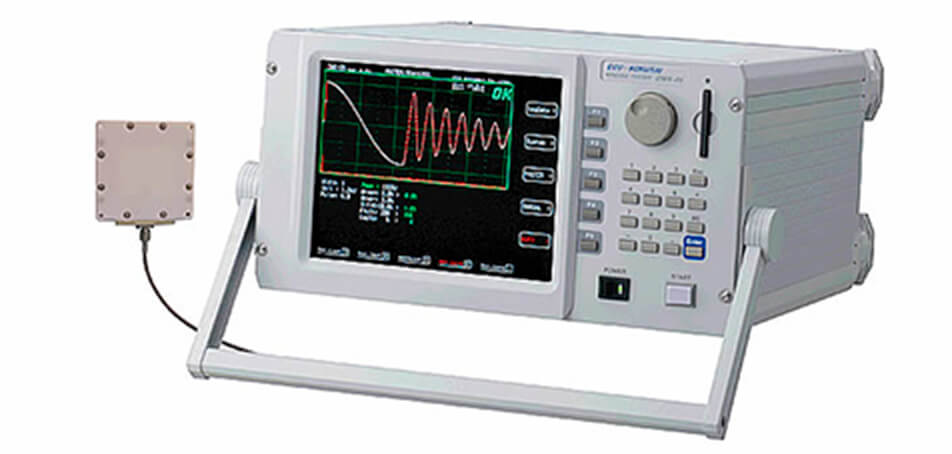
Partial discharge tester
Equipment used to detect partial discharge that takes place when an impulse signal is
applied to a stator winding.
This equipment can identify latent defects in a coil by detecting partial discharge.
(Applied voltage: 500 to 5,000 V)
Brake System
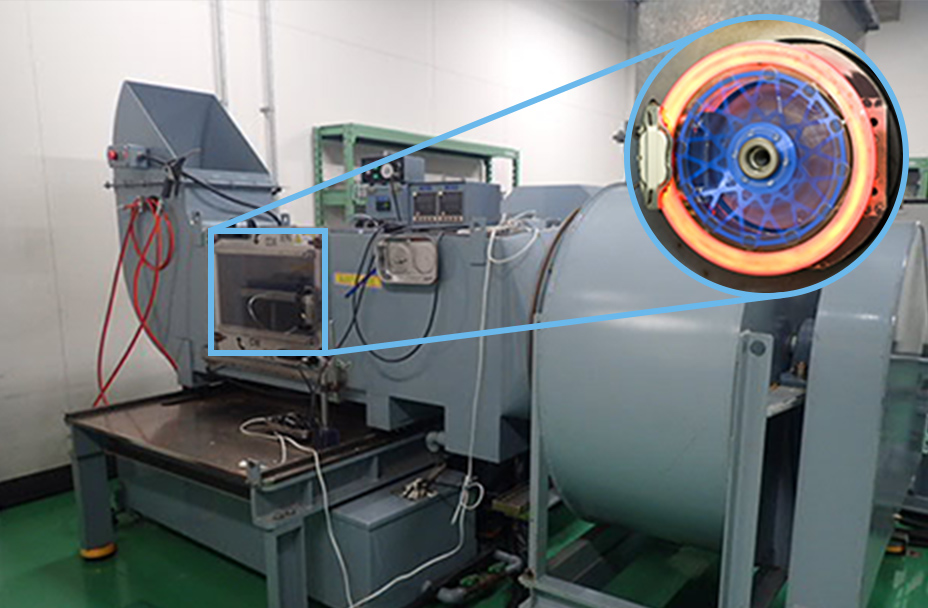
Disc brake tester
Special equipment can perform performance measurement and durability testing for
motorcycle disc brakes.
This equipment can measure the friction coefficient, braking torque and disc pad
temperature under input conditions (rpm, braking pressure and air resistance).
It also enables programmed operation with a durability testing mode that simulates
actual vehicle operation.
(Traction motor: 55 kW)
Drive System
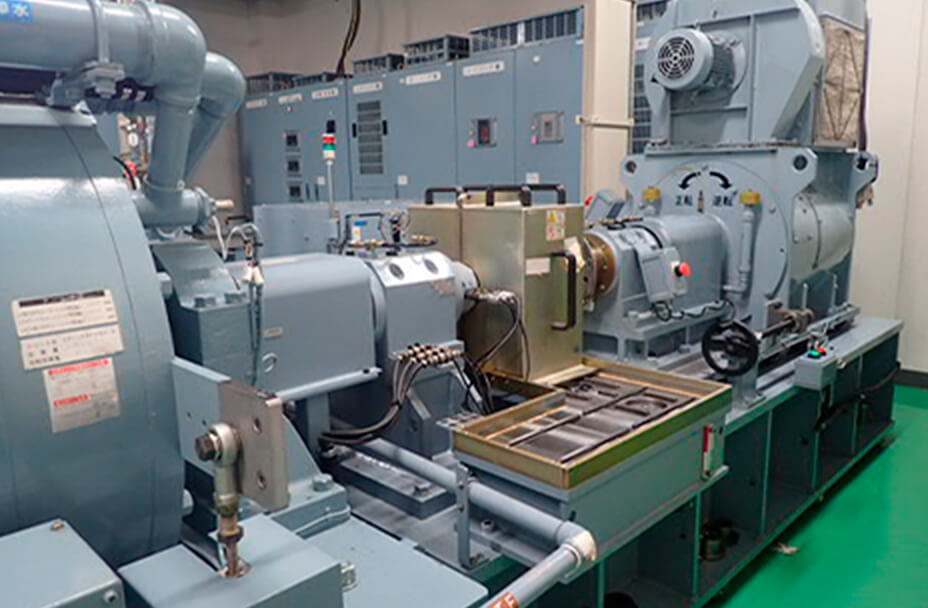
Torque converter performance tester
Special equipment that can perform performance measurement and durability testing for
torque converters.
This equipment can measure the capacity coefficient, torque ratio, clutch capacity, and
the performance of other parameters under input conditions (rpm, torque, oil pressure,
and oil temperature).
It also enables programmed operation with a durability testing mode that simulates
actual vehicle operation.
(Traction motor: Small 45 kW Medium 160 kW Large 300 kW)
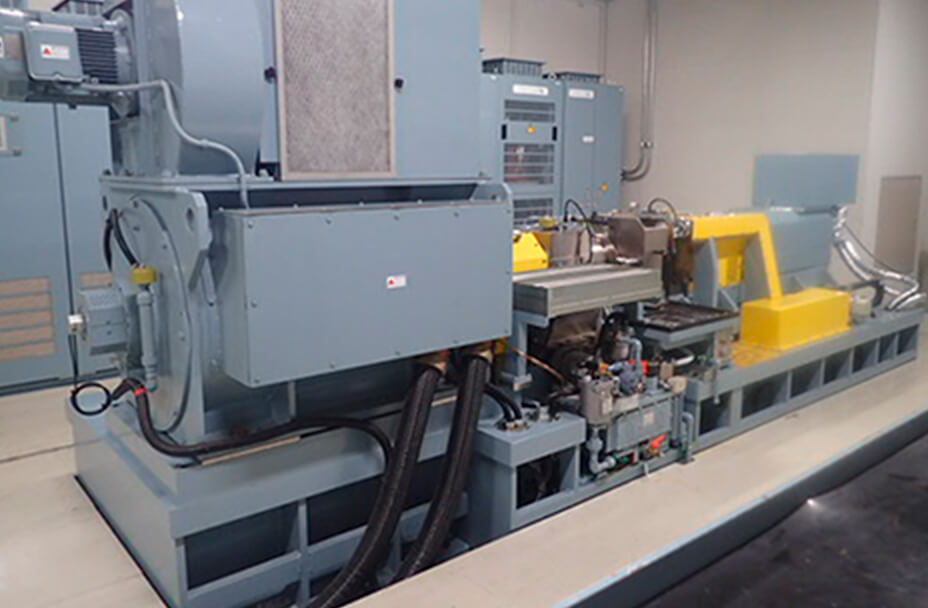
Rotational torsion vibrator
Equipment that can be used to subject torque converters and flywheels to rpm
fluctuations to measure the attenuation rate and test their durability.
The attenuation rate can be assessed by measuring the fluctuations in rpm and torque
under the input conditions (rpm fluctuation, torque fluctuation, oil pressure, and oil
temperature).
It also enables programmed operation with a durability testing mode that simulates
engine rpm fluctuations and torque fluctuations.
(Traction motor: 450 kW)
Thermal Management
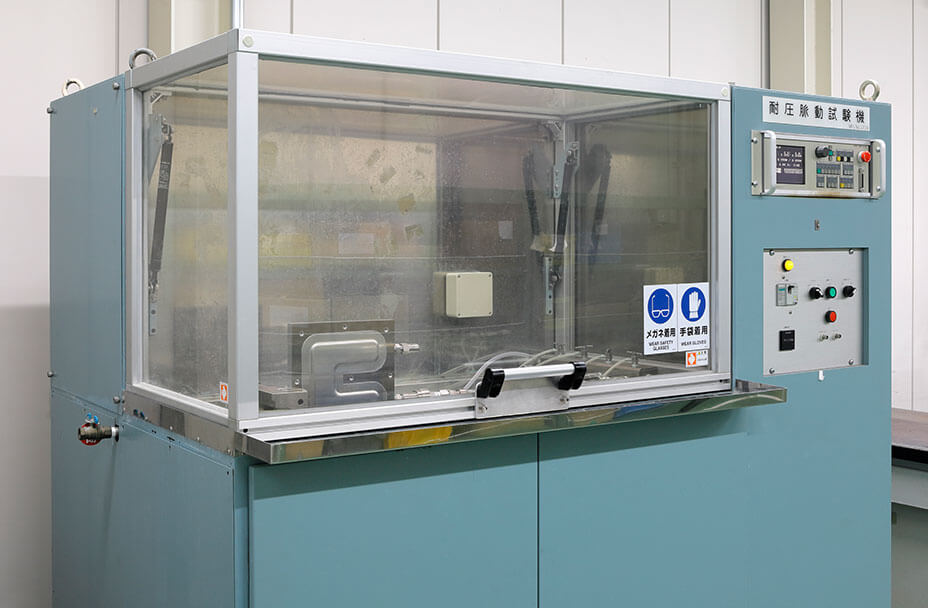
Pressure pulsation tester
Equipment used to evaluate toughness against the water pressure of parts assembled into
the vehicle coolant circuit.
This equipment pressurizes and decompresses a heat exchanger repeatedly to evaluate its
reliability after many pressure fluctuations.
It can generate high-speed (up to 6 Hz) pulses, thereby shortening the test period.
- Pressure: 0 to 1.0 MPa
- Frequency: 0 to 6 Hz
- Waveform: Sine wave, trapezoid wave, square wave, triangular wave
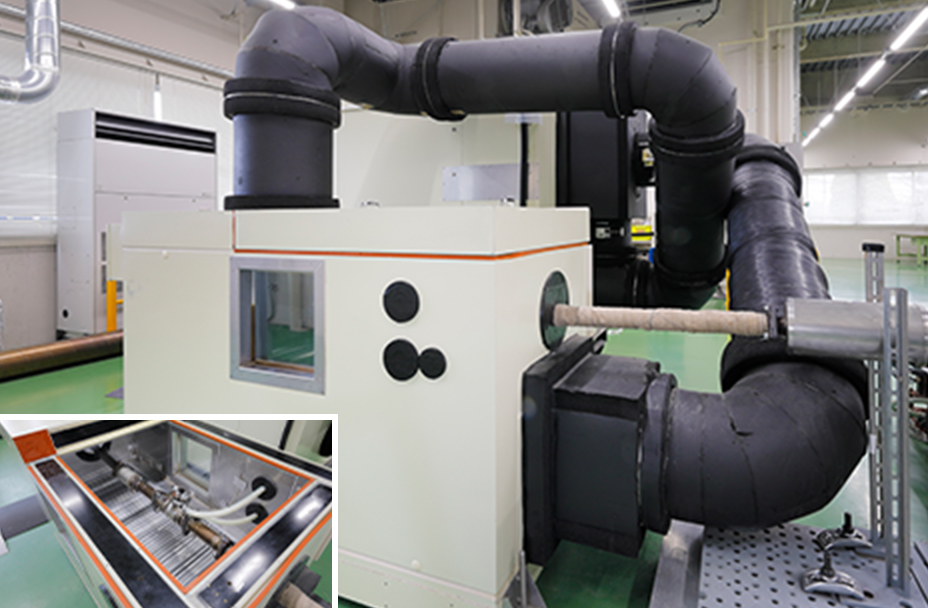
Heat recovery performance measuring instrument
Equipment used to feed air or cooling water to heat exchangers evaluates their heat recovery performance. This equipment consists of the optimal heating/cooling device, flowmeter and temperature sensor for air and cooling water and can accurately measure the amount of heat recovered. Also, this equipment provides an environmental tester and can simulate an extremely cold environment of -30°C.
- Air: Temperature Room temperature to 500°C / Flow rate 0.5 to 40 g/s
- Cooling water: Temperature -10 to 80°C / Flow rate 0.1 to 25 L/min
- Atmosphere: -30°C to room temperature
Exhaust System
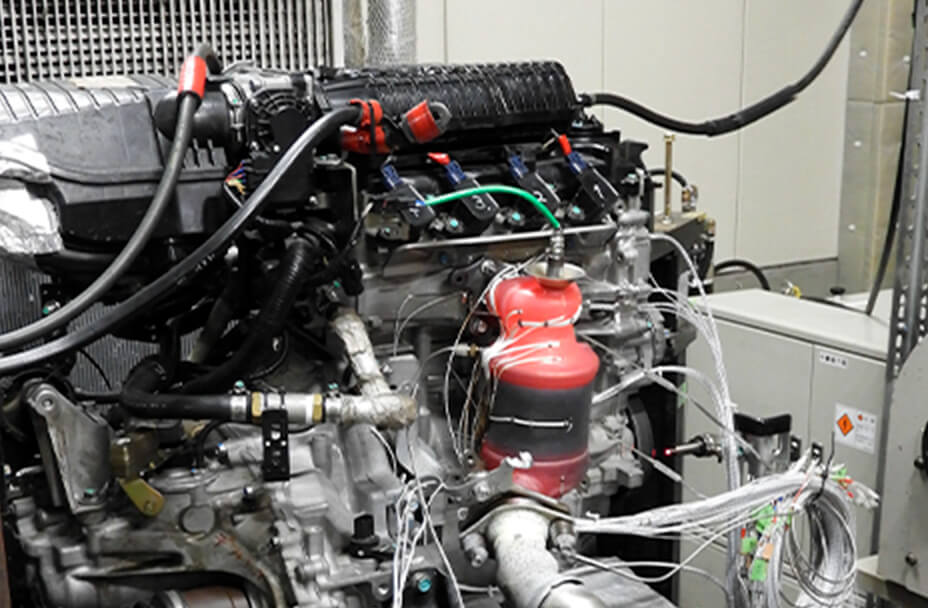
Engine bench
Equipment used to test vibration, heat, and exhaust pressure of engines.
This equipment simulates the actual vehicle installation state, and with an AC
dynamometer, is available in various test modes.
- Engine bench: 3 units
- Dynamometer: 220 kw, 280 kw, 370 kw
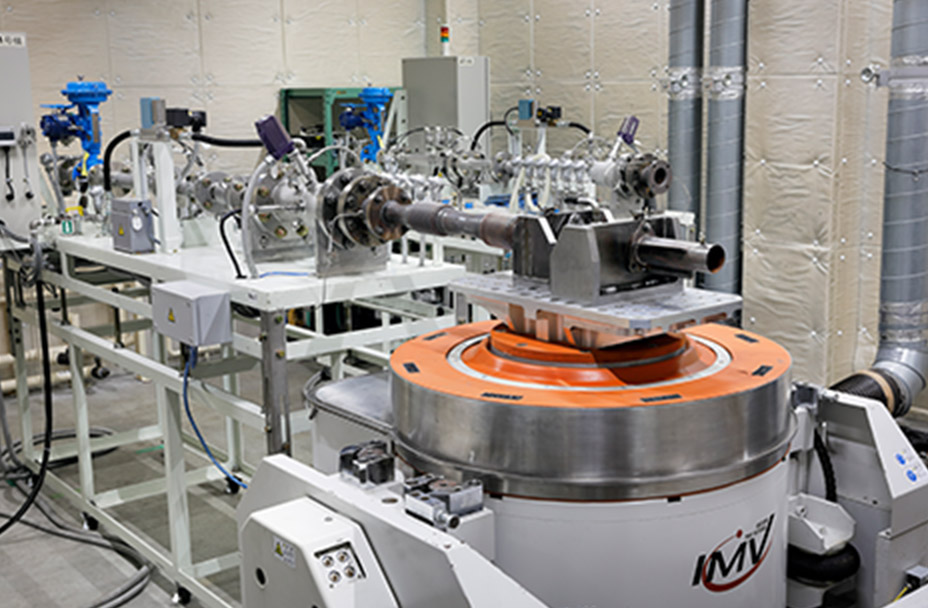
Exhaust gas simulator
Equipment used to perform high-temperature vibration testing by using a combustor and
electromagnetic vibrator to simulate an engine. When the hot/cold cycle is simulated,
the sample can be cooled down rapidly, thereby shortening the test period. Only thermal
testing or vibration testing can be performed by removing the unnecessary
equipment.
<Combustor>
- Temperature: 500 to 1,100°C
- Flow rate: 30 to 280 g/s
- Pressure: Up to 100 kPa
<Vibrator>
- Frequency: 5 to 2,600 Hz
- Acceleration: Up to 964 m/s2
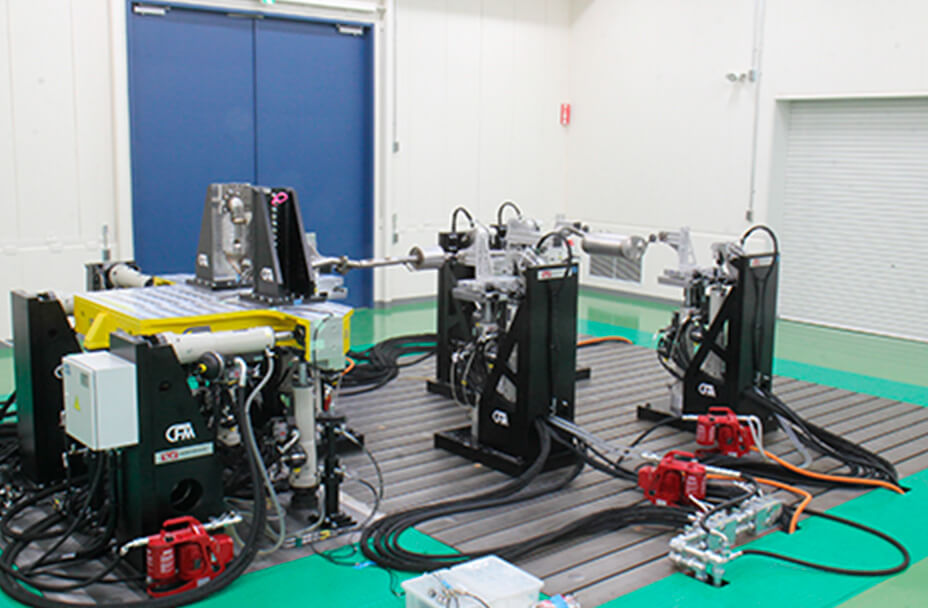
Rough road simulator
Equipment used to simulate the behavior of the engine and chassis while the vehicle is running on a rough road and to evaluate the durability of exhaust parts. This equipment can simulate the behavior of an actual vehicle, without the actual vehicle and the rough roads testings.
- Engine side: Six vibrators are used to simulate six degrees of freedom (applicable to not only exhaust parts but also other parts).
- Suspension point side: Two vibrators are used to simulate two degrees of freedom. Provided for five sets.
- Displacement: ±75 mm Acceleration: ±50 G (Engine side) ±20 G (Suspension point side)
- Frequency: Up to 60 Hz
- Temperature: Ambient temperature
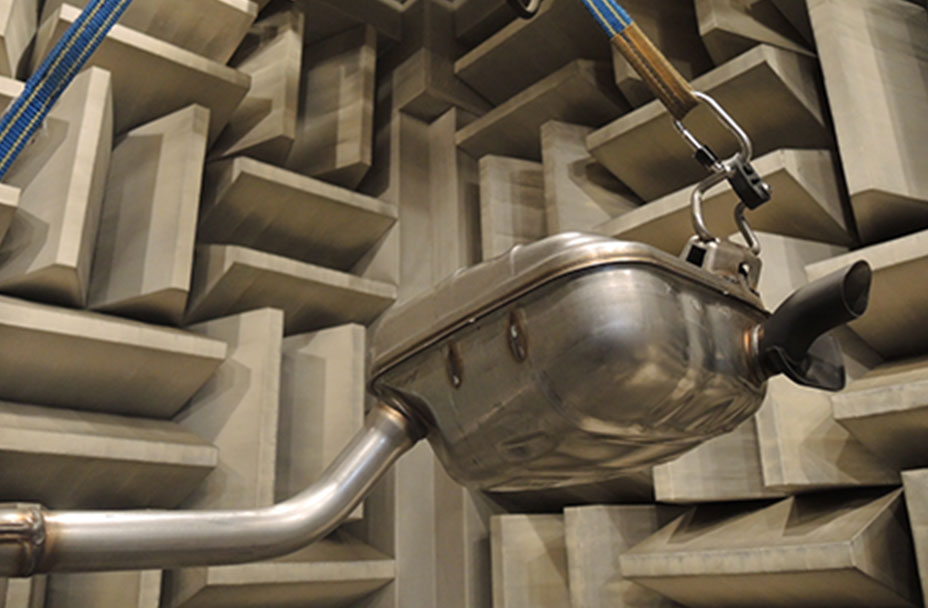
Anechoic room bench
Equipment is used to replicate vehicle exhaust noise by connecting the engine to a
dynamometer to simulate the vehicle’s operation.
The engine is placed in a dynamometer room while the sample is in an anechoic room to
evaluate exhaust noise without interference.
- Anechoic room bench: 2 units
- Anechoic room: Six-sided anechoic room Background noise NC-20
- Dynamometer: 415 kW, 300 kW
Design CAE analysis
Yutaka is using CAE to verify performance and reliability for each model during the design stage for efficient development.
Sites in Japan
Overseas Sites

If you have any orders or inquiries


